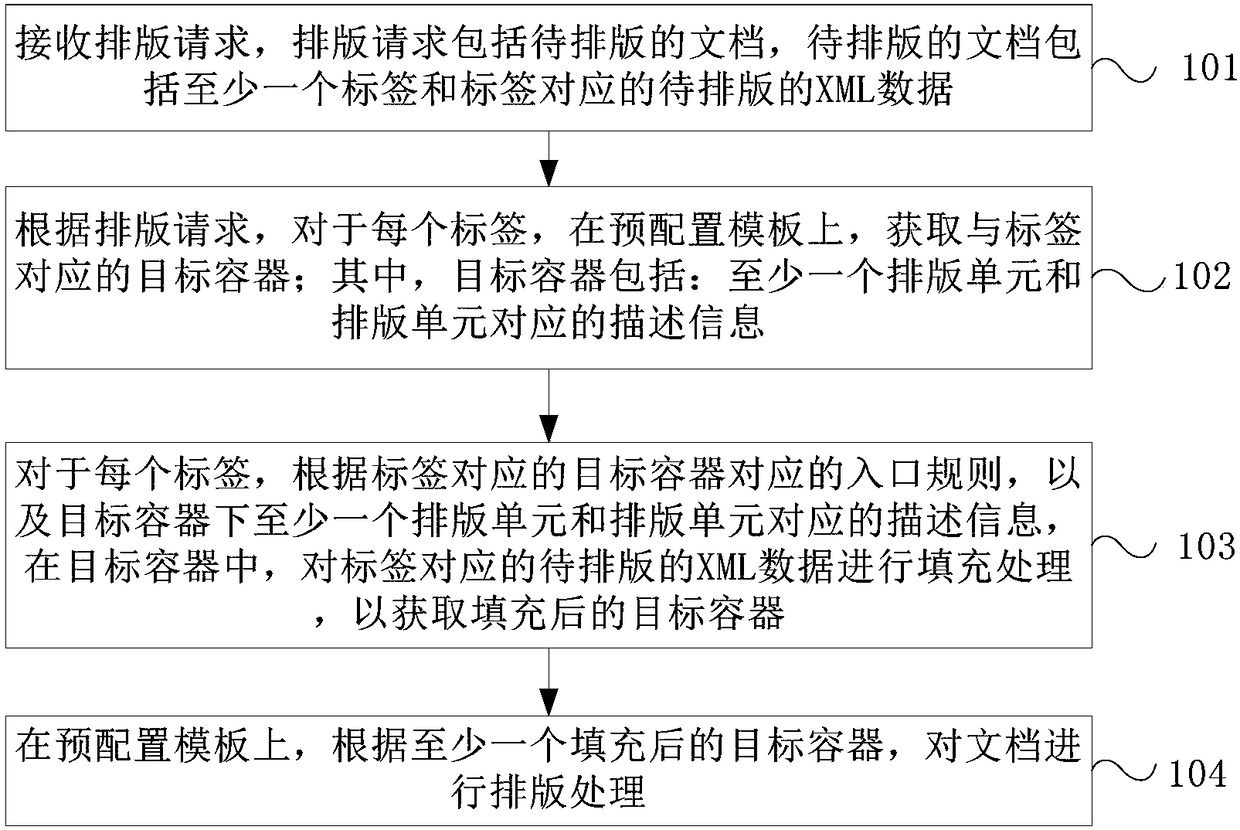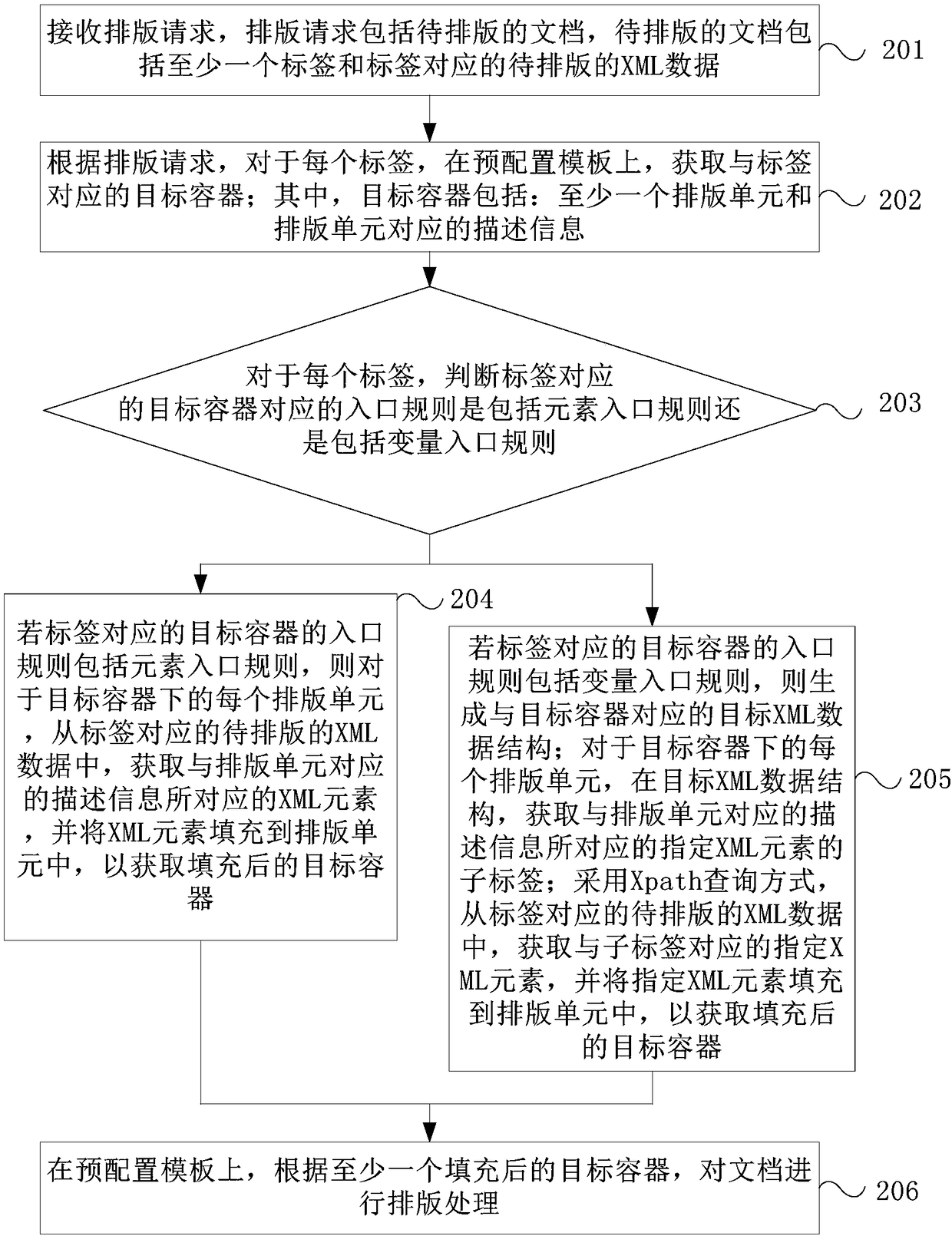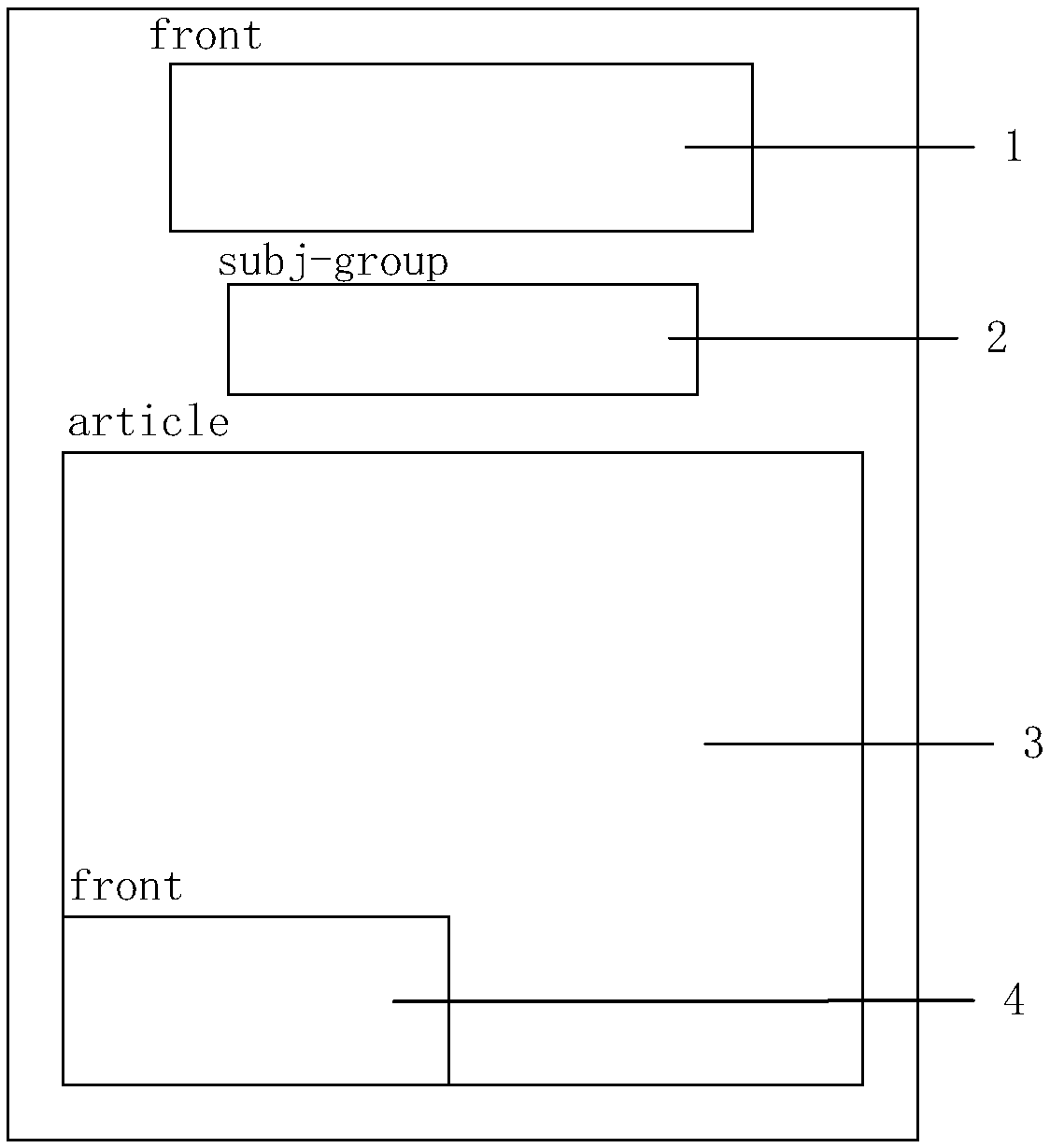Document typesetting processing method and device
A processing method and document technology, applied in word processing, electronic digital data processing, special data processing applications, etc., can solve the problem of low typesetting efficiency and achieve the effect of improving typesetting efficiency
- Summary
- Abstract
- Description
- Claims
- Application Information
AI Technical Summary
Problems solved by technology
Method used
Image
Examples
Embodiment 1
[0045] This embodiment provides a method for typesetting a document, which is used for typesetting a document. The execution subject of this embodiment is a typesetting processing device for documents, and the device can be set in typesetting software.
[0046] like figure 1 As shown, it is a schematic flow chart of the document typesetting processing method provided by the embodiment, and the method includes:
[0047] Step 101, receiving a typesetting request, the typesetting request includes a document to be typesetting, and the document to be typesetting includes at least one tag and XML data to be typesetting corresponding to the tag.
[0048]Specifically, typesetting refers to the process of filling the data in the document to be typeset into the corresponding position in the pre-configured template to generate the layout required by the user. Typesetting processing. The typesetting request includes a document to be typesetting by the user, and the document to be types...
Embodiment 2
[0061] This embodiment provides a further supplementary description of the document typesetting processing method provided in the first embodiment.
[0062] like figure 2 As shown, it is a schematic flow chart of the document typesetting processing method provided by the embodiment, and the method includes:
[0063] Step 201, receiving a typesetting request, the typesetting request includes a document to be typesetting, and the document to be typesetting includes at least one tag and XML data to be typesetting corresponding to the tag.
[0064] The specific operation of this step is consistent with that of step 101, and will not be repeated here.
[0065] Step 202, according to the typesetting request, for each label, obtain a target container corresponding to the label on the pre-configured template; wherein, the target container includes: at least one typesetting unit and description information corresponding to the typesetting unit.
[0066] The specific ope...
Embodiment 3
[0088] This embodiment provides an apparatus for typesetting a document, which is used to execute the method for typesetting a document in the above embodiments.
[0089] like Figure 7 As shown in , it is a schematic structural diagram of a document typesetting processing device provided in this embodiment. The document typesetting processing device 30 of this embodiment includes a receiving module 31 , an acquiring module 32 , a filling module 33 and a processing module 34 .
[0090] Wherein, the receiving module 31 is used to receive a typesetting request, and the typesetting request includes a document to be typesetting, and the document to be typesetting includes at least one label and XML data to be typesetting corresponding to the label; For the typesetting request, for each of the tags, on the pre-configured template, obtain the target container corresponding to the tag; wherein, the target container includes: at least one typesetting unit and description infor...
PUM
 Login to View More
Login to View More Abstract
Description
Claims
Application Information
 Login to View More
Login to View More - Generate Ideas
- Intellectual Property
- Life Sciences
- Materials
- Tech Scout
- Unparalleled Data Quality
- Higher Quality Content
- 60% Fewer Hallucinations
Browse by: Latest US Patents, China's latest patents, Technical Efficacy Thesaurus, Application Domain, Technology Topic, Popular Technical Reports.
© 2025 PatSnap. All rights reserved.Legal|Privacy policy|Modern Slavery Act Transparency Statement|Sitemap|About US| Contact US: help@patsnap.com



